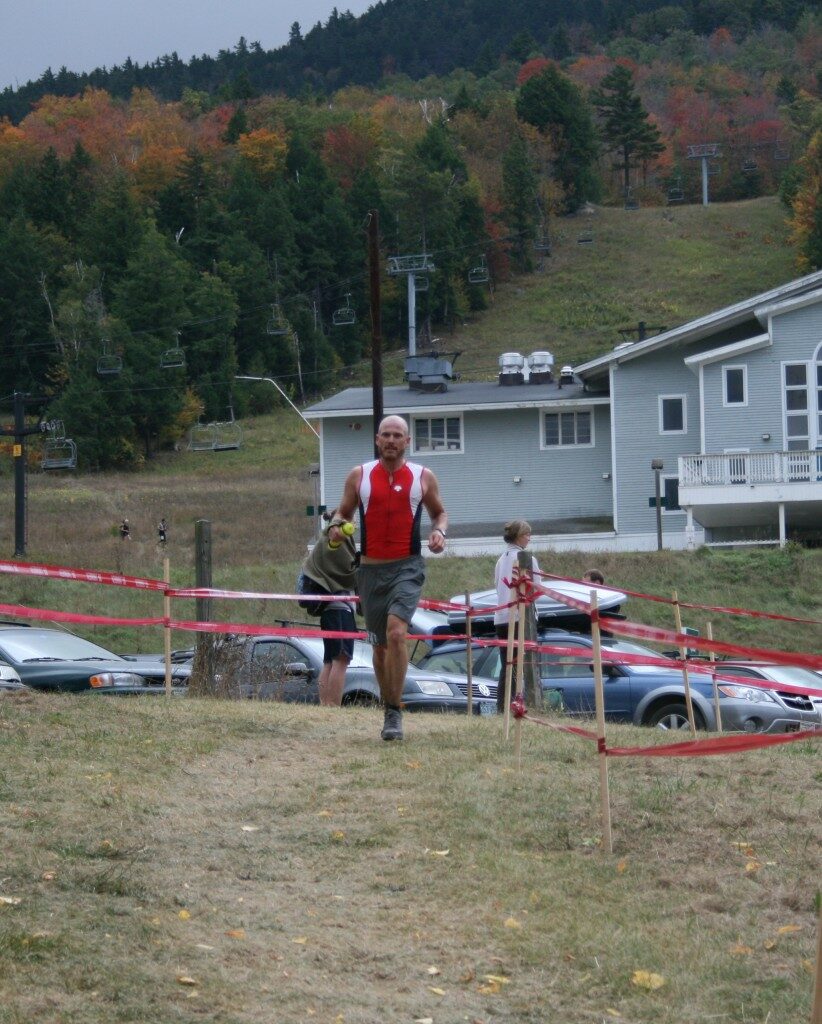
When I was training for my first ultra-marathon, I learned how important hill training and hill repeats are to develop strength, endurance and power. But, you don’t need to be training for an ultra or a hilly race to reap the benefits of hill training.
Hill training and hill repeats offer benefits for all runners and triathletes, and should be incorporated in some way into most training plans.
Going Down
When most people think hill training, they think about going up. But, there are two parts to a hill. It is equally important to train for downhill running – particularly if you are prone to injuries, such as ITBS.
First, I run up the hill (or bridge in our case here in flat Jersey) at a steady pace. I don’t fight gravity. I wait to take advantage of it. (If you live in a flat location, see this article for ways to simulate hill training in flat locations.)
I pick up my pace as I start the downhill, hitting a maximum speed by the time I reach the bottom. I know this approach goes against some of the conventional wisdom regarding downhills and the need to take it easy to avoid burning out the quads. And, this is true–if you don’t train the downhills in this manner. The body can be trained to run the downhills aggressively–just like it can be trained to do anything else.
It is important to pay very close attention to form when you are running downhill. You need to be mindful of what’s up ahead, and keep your feet as light as possible. Lean forward (as much as is possible) from the ankles – not the hips – and be sure that your foot lands directly under your hips, or as close to your center line as possible. Don’t throw your leg way out in front of you, which will lead you to “stick” your heel on the downhill (i.e., heel strike), slowing you down and leaving you vulnerable to injury. Use your arms (bent at a 90-degree angle) for balance and speed.
Downhill running is great for speed skills – the ability to maintain proper biomechanics at higher speeds without taxing your anaerobic system. Since it is easier to run faster going downhill, you can stay in an aerobic zone, while working on your form.
Despite its benefits, downhill running is pretty hard on your body. So, if you are injured or recovering from an injury, you should skip the downhill repeats. If you have issues with your knees, excessive downhill running is not advisable. Even if you are perfectly healthy, you need to exercise caution and gradually adapt your body to downhill running. For example, your first session may only include three or four 2-minute downhill repeats, separated by 2-3 minute easy uphill or flat running between.
Going Up
To improve your power and strength, you will want to focus on running up the hill, and using the downhill as recovery. One of the advantages of uphill running is that you can increase cardiovascular effort without increasing the stress on your musculoskeletal system. Uphill training also help us learn to transition to more of a midfoot strike (if you were previously a heel striker).
A sample uphill workout for a beginner might include:
- 15 minute warm up
- four 30-second uphill strides (with 60-second easy jog between)
- hill repeats –> 3 x 2 minute uphill at-or-near race pace, with 2 minute easy jog (or walk) downhill
- 15 minute cool down
As you adapt to the training stress, you can slowly and gradually include more and/or longer repeats.
Another approach to uphill training includes hill bounding, which stresses form and enhances strength. Hill bounding is a type of exaggerated skipping (or bounding) up a hill. You are not overstriding, but rather exaggerating the running motion as you move up the hill. It can be done in place of a traditional hill workout.
Here’s a video that illustrates the hill bounding technique:
Hill Training Isn’t Just for Hilly Racing
Olympic great Frank Shorter once said, “Hill training is speed work in disguise.” This assessment rings true for our athletes’ training with hill repeats. Even if you don’t plan to race hills, hill training has many, many benefits for cardiovascular fitness, force, and strength.
While your uphill pace may not be fast as it would be during flat-land speed repeats, your effort is on par with speedwork exercises–if not more so! So, the next time you do run on flatter land, you’ll notice an uptick in your speed or a decrease in your rate of perceived exertion – and likely both.
While the effort is comparable to speed work, so is the stress on your body. Therefore, proper recovery following hill training is important. I treat hill days as “hard” days in my training plan. A dedicated core program (abdominals, hips and glutes) is an important component for all types of training – and especially so for hill training.
